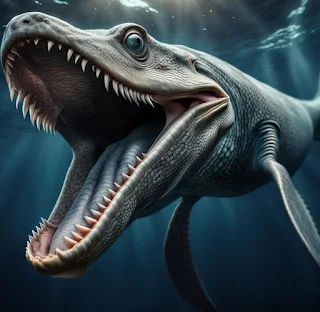Jurassic Africa: Monsters of the Tethys Sea
Jurassic Africa: Monsters of the Tethys Sea
From 201 to 145 million years ago, the Jurassic period was an age of giant reptiles and shifting continents. Along the western coast of what is now Africa — then part of the vast Gondwana supercontinent — the warm Tethys Sea hosted some of the most fearsome apex marine predators in Earth’s history.

Gondwana and the Ancient Tethys Sea
During the Jurassic, Gondwana included Africa, South America, Antarctica, Australia, India, and Arabia. The Tethys Sea separated Gondwana from the northern landmass of Laurasia and created a warm, nutrient-rich marine environment perfect for giant predators.
This sea shifted constantly as tectonic plates opened and closed ocean basins. Its changing shape created new habitats and drove evolution in marine reptiles and invertebrates such as ammonites and bivalves.
The Apex Marine Predators
Ichthyosaurs — Fast, Streamlined Hunters
Ichthyosaurs were dolphin-like reptiles with streamlined bodies and razor-sharp teeth. Fossils along Africa’s ancient coasts suggest they thrived here. The giant Shonisaurus sikanniensis could reach 21 m (69 ft) — three times longer than an orca.
Plesiosaurs — Long-Necked Ambushers
Plesiosaurs had long necks and paddle-like flippers for agile swimming. The massive Elasmosaurus platyurus stretched up to 14 m (46 ft), towering over a modern great white shark.
Pliosaurs — Big-Headed Power Predators
Pliosaurs had huge skulls and strong jaws, built for crushing prey. Pliosaurus funkei could grow to 12 m (39 ft) — far bigger than today’s sea lions or most modern sharks.
Together, these reptiles were the apex predators of the Jurassic seas, shaping the evolution of marine ecosystems around what is now Africa.

























